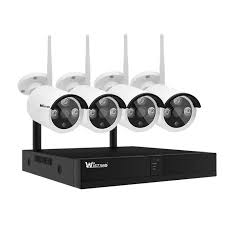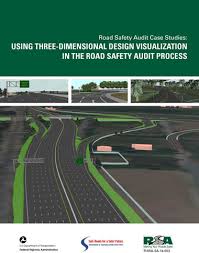As urban areas continue to grow and traffic congestion becomes a common issue, the need for effective traffic solutions has never been more pressing. From smart traffic management systems to innovative infrastructure developments, various measures are being implemented to alleviate traffic woes and enhance road safety.
One of the key components of modern traffic solutions is the use of intelligent traffic lights that are equipped with sensors and cameras to monitor and analyze traffic flow in real-time. These smart lights can adjust signal timings based on the volume of vehicles on the road, helping to reduce congestion and improve overall traffic efficiency.
Another important aspect of traffic solutions is the implementation of advanced vehicle detection technologies such as Automatic Number Plate Recognition (ANPR) systems. These systems can automatically identify and track vehicles, enabling authorities to monitor traffic patterns, enforce regulations, and manage parking facilities more effectively.
In addition to technology-driven solutions, infrastructure upgrades play a crucial role in addressing traffic challenges. Widening roads, constructing flyovers and underpasses, and implementing dedicated lanes for public transport are some of the infrastructure improvements that can help streamline traffic flow and reduce travel times for commuters.
Furthermore, promoting sustainable modes of transportation such as cycling lanes, pedestrian-friendly pathways, and efficient public transportation systems can help reduce reliance on private vehicles and ease congestion on roads. Encouraging carpooling and ridesharing initiatives can also contribute to reducing the number of vehicles on the road during peak hours.
Overall, a holistic approach that combines technological advancements with infrastructure enhancements and sustainable transport initiatives is essential for developing effective traffic solutions that cater to the evolving needs of urban mobility. By embracing innovation and fostering collaboration between stakeholders, cities can create safer, smoother, and more efficient transportation networks for their residents.
Effective Traffic Solutions: 6 Tips to Reduce Congestion and Improve Road Safety
- Use public transportation whenever possible to reduce the number of vehicles on the road.
- Carpool with others to share rides and decrease traffic congestion.
- Follow traffic rules and regulations to ensure safety for yourself and others on the road.
- Consider biking or walking for short distances instead of driving to lessen traffic volume.
- Plan your routes ahead of time to avoid getting stuck in traffic jams.
- Support initiatives for better urban planning and infrastructure development to improve traffic flow.
Use public transportation whenever possible to reduce the number of vehicles on the road.
Utilizing public transportation whenever feasible is a practical tip to mitigate traffic congestion and decrease the volume of vehicles on the road. By opting for buses, trains, or other forms of public transit, individuals can contribute to alleviating traffic woes, reducing emissions, and promoting sustainable urban mobility. Embracing public transportation not only helps in easing congestion but also fosters a more efficient and environmentally friendly transportation system for the community as a whole.
Carpool with others to share rides and decrease traffic congestion.
By carpooling with others to share rides, individuals can play a significant role in reducing traffic congestion and minimizing the number of vehicles on the road. Sharing a ride with coworkers, friends, or neighbors not only helps in cutting down on fuel costs and vehicle emissions but also contributes to a more sustainable and efficient transportation system. Carpooling promotes a sense of community while easing the burden on road infrastructure, making it a practical and eco-friendly solution to alleviate traffic congestion in urban areas.
Follow traffic rules and regulations to ensure safety for yourself and others on the road.
Following traffic rules and regulations is crucial to ensuring safety for yourself and others on the road. By obeying speed limits, traffic signals, lane markings, and other rules, you contribute to a smoother flow of traffic and reduce the risk of accidents. Respecting pedestrian crossings, giving way to emergency vehicles, and avoiding distractions while driving are all essential practices that help create a safer road environment for everyone. Remember, adherence to traffic laws not only protects your own well-being but also promotes a culture of responsible driving that benefits the entire community.
Consider biking or walking for short distances instead of driving to lessen traffic volume.
One effective tip for addressing traffic congestion is to opt for biking or walking for short distances instead of driving. By choosing sustainable modes of transportation like cycling or walking, individuals can not only reduce their carbon footprint but also help lessen the volume of vehicles on the road. This simple shift in commuting habits not only promotes a healthier lifestyle but also contributes to easing traffic congestion and enhancing overall road safety in urban areas.
Plan your routes ahead of time to avoid getting stuck in traffic jams.
Planning your routes ahead of time is a valuable tip when it comes to navigating through traffic congestion. By mapping out your journey in advance and choosing alternate routes if necessary, you can avoid getting stuck in traffic jams and reach your destination more efficiently. This proactive approach not only saves time but also helps reduce stress levels associated with being caught in gridlocked traffic. By staying informed about road conditions and potential bottlenecks, you can make informed decisions that contribute to a smoother and more pleasant travel experience.
Support initiatives for better urban planning and infrastructure development to improve traffic flow.
Supporting initiatives for better urban planning and infrastructure development is crucial in improving traffic flow in urban areas. By strategically designing road networks, implementing efficient public transportation systems, and creating pedestrian-friendly spaces, cities can effectively reduce congestion and enhance overall mobility for residents. Investing in sustainable infrastructure projects and incorporating smart technologies into urban planning can lead to long-term benefits by promoting smoother traffic flow, reducing travel times, and creating a more livable environment for all.



